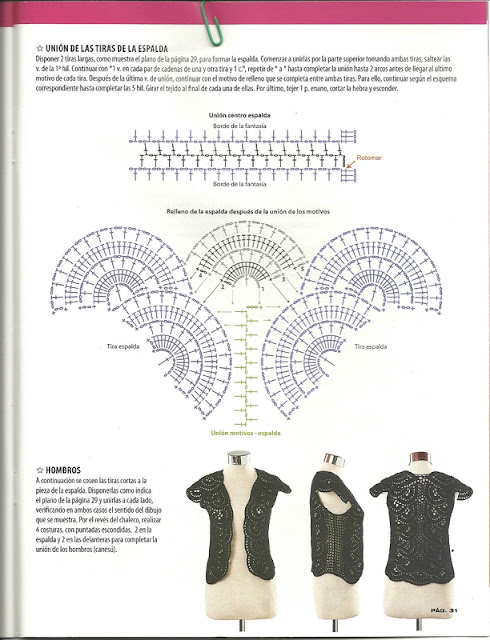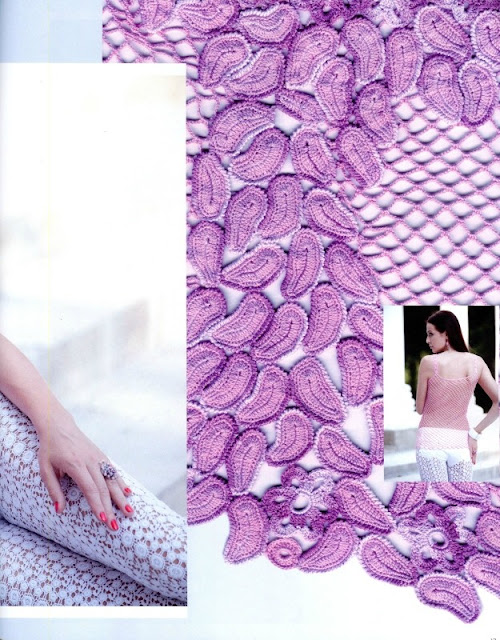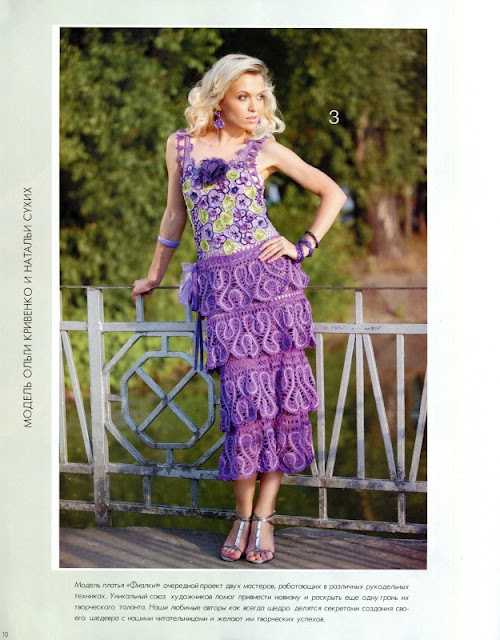 | I'll begin by explaining how to work the knots, and then explain how to put the different size stitches together to join your flowers.
You will need to know three things.
- How to make a small Solomon's knot
- How to make a large knot pulled slightly shorter
- How to join knots together as you work.
I also ran out of yarn while working the sample so I'll show you how to join a new ball of yarn while working the edging.
I use the UK double crochet stitch throughout this tutorial. It is the same as the US single crochet stitch.
I have used a Studio Twelve Multi-Fleur loom, fingering weight wool and a 2.5mm crochet hook to make my red sample piece. My flowers have three rounds each on the large and small flowers.
How to work the small Solomon's knot stitch
To make the small knot, join your yarn to the petal with a slip stitch and pull the loop larger.
|
|
| Your loop should be roughly the same length as the end of the long petals on your flower. |
 | Yarn round hook and |
 | pull through. |
 | Next put your hook under the back thread (where indicated in the photo) |
 | and work a double crochet (US single crochet) |
 | How to work the large Solomon's knot stitch
The large Solomon's knot is worked the same as the small knot except that it is pulled shorter when you work the double crochet into the back of the stitch.
Slip stitch into your petal and pull the loop large |
 | Your loop should be roughly the length of the arrow shown in the photo on the left. |
 | Next you need to measure how long to make the finished stitch. Keeping your loop the size you just made, measure the length of yarn to make the stitch |
 | It should measure roughly half the diameter of your flower |
 | Yarn round your hook and pull through. You can see that the large loop has been pulled shorter. This is what creates the flower effect when the large knots are joined together. |
 | Finish by putting your hook under the back thread of the stitch and working a double crochet, as you did for the short knot. |
 | How to join knots
Solomon's knots are joined together at the double crochets between the loops. |
 | Put your hook through the centre of the double crochet |
 | and work a slip stitch. When joining large knots, join them all into the same stitch or leave them loose until the last motif of the group is added and join them all together at once. |
 | How to join new yarn while working the edging
If you run out of yarn while working your edging, stop when you join your knot to a petal with a slip stitch. Pull the yarn through to fasten it off.
Join your next ball of yarn by working a slip stitch into the the slip stitch you just fastened off and keep working. |
 | Turn your work over. Take your ends loosely to the centre of the flower and darn them in. The thread will look like one of the threads of the petals. |
 | How to put all of this together to join your flowers
I'll now explain how to use these stitches to join your flowers together. I'll start with diagrams of each section followed by photographs of my actual sample.
Join your yarn to all the loops of a large petal (point 1)
Work two large knots, join to the petal with a slip stitch at point 3
Work two small knots, join to the petal with a slip stitch at 5
Work two small knots, join to the petal with a slip stitch at 7,
work two large knots, join to the petal with a slip stitch at 9
Work two small knots, join to the petal with a slip stitch at 11
Work two small knots, join to the petal with a slip stitch at 13,
Work one large knot
You are now almost ready to join the second flower |
 | Here is a photo of my sample worked up to this point |
 |
Work one large knot and join to a petal of the next flower at 15
Work one small knot and join to the double crochet between knots at point 12 with a slip stitch
Work one small knot and join to the petal at point 17 with a slip stitch
Work one small knot and join to the double crochet between knots at point 10 with a slip stitch
Work one small knot and join to the petal at point 19 with a slip stitch
Work one large knot and join to the double crochet between knots at point 8 with a slip stitch
Work one large knot and join to the next petal at point 21
Continue following the diagram across the bottom of your second flower and up the right hand side |
 |
| Keep joining more motifs in this way until you have completed the first row. You can make your rows as long as you want. |
 |
Next work across the top of your row of flowers, joining the large knots at point 38. You should always join large knots in the same stitch.
If you prefer, you can leave the large knots loose at this stage and join them all at once when you add the last set of large knots to the group. |
 |
| Here is my sample worked up to this point. |
 |
The second row is joined in the same way as the first, except you will be joining it to the first row at the same time.
Work in the direction of the arrows, joining with slip stitches at points 42, 40, 38, 36, 34 and 32 before working the next knot. |
 |
| My sample with all four motifs joined together. |
 |
| To finish up, work across the top of your flowers from right to left (as you did at the end of each row) |
 |
|
 |
| and then down the left hand side. |
 |
| Join to the very first slip stitch with a slip stitch and fasten off. |
 | This image shows the sample after blocking.
Whether or not you block your finished project depends on the yarn you use and the way you want your finished project to look. |
 | The Solomon's knot join is particularly nice worked in a fine fluffy yarn such as this mohair/acrylic mix.
This sample has not been blocked. |
 |
To make a triangular shawl, begin with the longest row and make each row one motif shorter.
Finish off by working across the top from right to left and then down the side in steps. |
http://www.liveinternet.ru/users/irina_karpenko/post131784324/







































very nice thank you so much =)
ReplyDelete